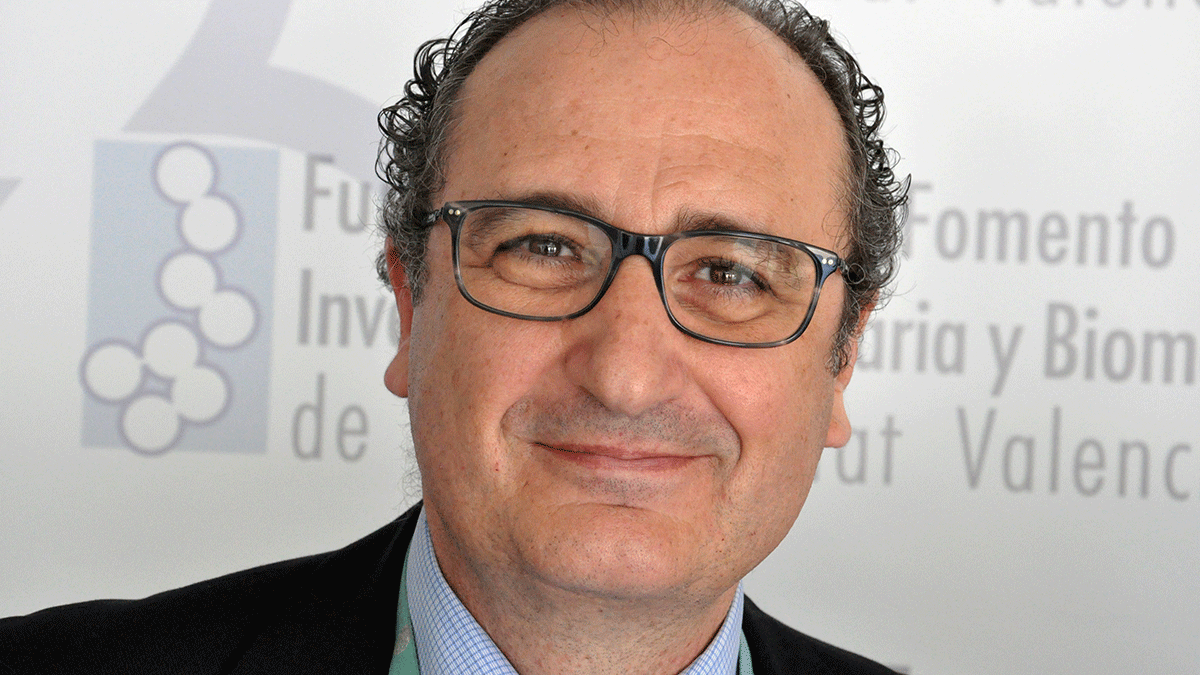Andrés Moya, researcher at the University of Valencia in the project
The University of Valencia and the Biotechvana company of the Science Park have participated in the development and validation of a new pandemic simulator that helps to predict their evolution in different epidemiological scenarios. The system, called LOIMOS, has been developed in the context of COVID-19 and its results are limited to the SARS-CoV-2 virus, although they could be applied to the study of other pandemics. The work is published in the journal microLife.
LOIMOS has been developed by research teams from the University of Valencia, the Polytechnic University of Valencia, the Biology and Evolution of Microorganisms group of the Ramon y Cajal Institute for Health Research (IRYCIS) Madrid, CIBER in Epidemiology and Public Health, the FISABIO Foundation, the Spanish National Research Council (CSIC), the University General Hospital of Valencia, the La Paz University Hospital of Madrid and the Biotechvana company, located in the Science Park of the University of Valencia.
“We can draw multiple scenarios, ask all the questions and hypotheses we want and predict their effects. This helps a lot to decide what measures need to be taken, to establish those that are more effective to prevent or at least limit the spread of the virus”, says José M. Sempere, researcher of the ALFA-VRAIN group of the Polytechnic University of Valencia.
Virtual and hierarchical design of the behaviour and evolution of viruses
The system is based on computer models with membranes, which allow to virtually design the behaviour of viruses in various environments, conditions and levels of severity.
“These models reproduce viruses and interactions with an unprecedented level of detail. In this way, we can evaluate and predict the incidence of a virus in a neighbourhood, in a city or in a country, under different situations, and observe its evolution in the short, medium and long term”, explains José M Sempere.
“The important thing is that they are simulated under certain assumptions – for example, various types of preventive measures – and their infection rate and variation over time in the population are assessed. Obviously, if the assumptions change, the effects of the virus could change. Having a tool like the one developed here is very relevant, because it can help propose effective measures against the spread of this epidemic by the virus and, by extension, any other pathogen”, explains Andrés Moya, Professor of Genetics at the University of Valencia and researcher at the Institute of Integrative Systems Biology (I2SysBio - UV / CSIC) and Fisabio.
LOIMOS is also a model with different hierarchical levels that interact with each other, unlike others used so far. In this way, modifying only one parameter of these levels allows you to see the effects at this level and at all others. “For example, we could increase in the model the period in which the virus can produce infections and see how this would affect the number of people who go to work”, says Marcelino Campos, also a researcher in the ALFA-VRAIN Institute of the Polytechnic University of Valencia.
Among other variables, LOIMOS incorporates the type of infections, the degree of acquired immunity or the period and rates of infection; allows you to define different values depending on the area and age range of the infected person or the mechanics of the infection.
The scenario is a European town of 10,000 inhabitants
For validation, the researchers team applied LOIMOS to a fictitious European-type city of just over 10,000 inhabitants, and reproduced the dynamics of the epidemic and the effects of immunity on SARS-CoV-2 virus transmission in different age groups.
The model predicted the consequences of delaying the adoption of non-pharmaceutical interventions between 15 and 45 days after the first reported cases and the effect of these interventions on infection and mortality rates. The researchers also simulated non-pharmaceutical interventions to reduce infections at three different levels: 20%, 50%, and 80%.
And another of the most relevant conclusions was the verification of the importance of focusing the first efforts on the most sensitive and older people. “If tight when infections begin, the most sensitive and older people are isolated, they can be slowed down a bit, but where it is most noticeable is in the health resources used and in mortality, because these people are the ones who are more likely to suffer worse symptoms when infected”, adds Campos.
The LOIMOS team is currently working on the incorporation – and simulation into the model – of the incidence of new strains in the vaccination period.
Reference
Simulating the impact of non-pharmaceutical interventions limiting transmission in COVID-19 epidemics using a membrane computing model. Campos M, Sempere JM, Galán JC, Moya A, Llorens C, de-Los-Angeles C, Baquero-Artigao F, Cantón R, Baquero F. Microlife. 2021 Sep 9;2:uqab011. doi: 10.1093/femsml/uqab011. PMID: 34642663; PMCID: PMC8499911
https://pubmed.ncbi.nlm.nih.gov/34642663/


